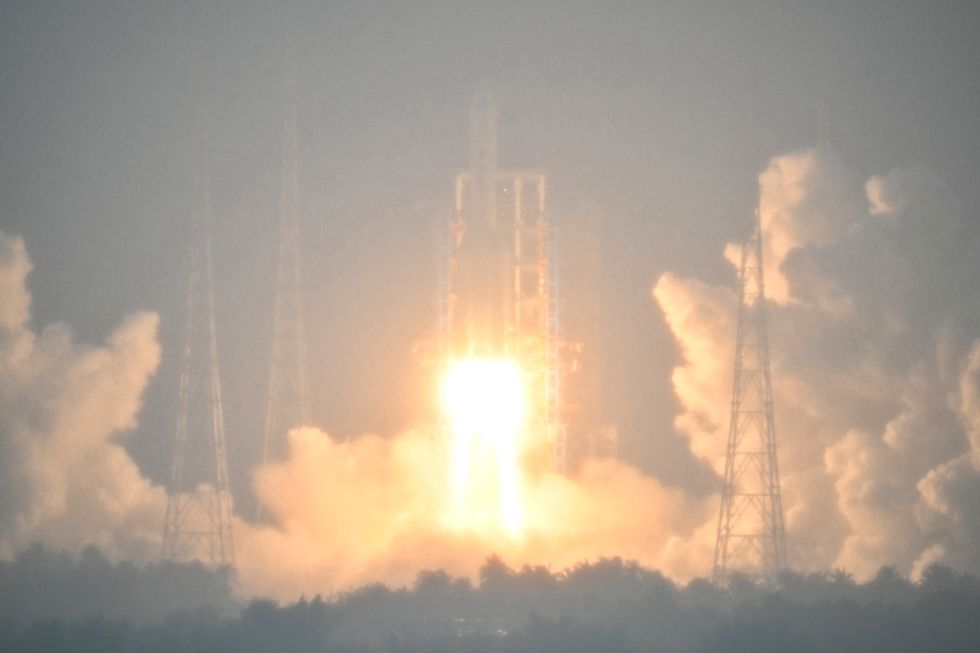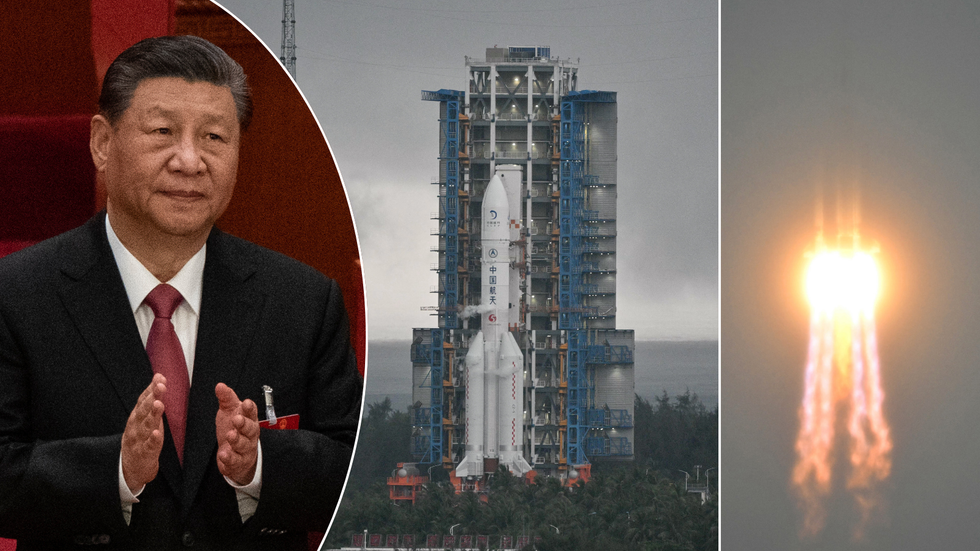China's largest rocket blasted off at 5.27pm Beijing time in an attempt to complete the first ever sampling mission to the moon's mysterious far side
Don't Miss
Most Read
Trending on GB News
China has launched an uncrewed rocket on a nearly two-month mission to gather rock samples from the far side of the moon in a world-first attempt by any country.
The Long March-5, China's largest rocket, blasted off at 5.27pm Beijing time (10.27am UK time) from Wenchang Space Launch Center on the southern Chinese island of Hainan carrying the eight-ton Chang'e-6 probe in tow.
Chang'e-6 is tasked with landing in the South Pole-Aitken Basin on the mysterious far side of the moon, which perpetually faces away from the Earth, after which it will retrieve and return samples.
Today's launch marks a significant milestone in China's ambitious space programme - which is banned from operating with Nasa assistance by US law.
 Pictured: The Long March-5, China's largest rocket, blasting off today
Pictured: The Long March-5, China's largest rocket, blasting off todayGetty
Pierre-Yves Meslin, a French researcher working on the mission, said: "It is a bit of a mystery to us how China has been able to develop such an ambitious and successful programme in such a short time."
Officials and scientists from France, Italy, Pakistan and the European Space Agency (ESA) - all of which have equipment aboard the vessel - were present at the groundbreaking launch today.
Neil Melville-Kenney, a technical officer at ESA working with Chinese researchers, said: "The far side of the moon has a mystique perhaps because we literally can't see it.
"We have never seen it apart from with robotic probes or the very few number of humans that have been around the other side."
MORE ON CHINA IN SPACE:

Researchers expressed their shock over how quickly China had managed to get the mission off the ground
Getty
After the probe separates from the rocket, it will take between four and five days to get into the moon's orbit, before touching down a few weeks later at the start of June.
Once on the moon's surface, the probe will spend two days digging up a couple of kilogrammes of samples before heading back to Earth, where it is expected to land in the northern Chinese province of Inner Mongolia.
The probe will face a race against time while on the dark side of the moon - the window for collecting samples stands at just 14 hours, compared to 21 on the moon's near side.
Chang'e-6 is part of a long-term project to build a permanent research station on the moon - the joint Chinese and Russian International Lunar Research Station (ILRS).
Wu Weiren, chief designer of the Chinese Lunar Exploration Project, had said last month that a "basic model" of the ILRS would be in place by 2035.
But, as is often the case with space exploration, international relations have been sidelined in the name of cooperation, with Western countries - often at loggerheads with China - eager to get in on the act.
James Carpenter, head of the ESA's lunar science office, said: "We know that the moon may have resources that could become useful in the future, so the European Space Agency, Nasa, the Chinese agency and others around the world are going to the moon.
"Part of the rationale is to understand those resources".









